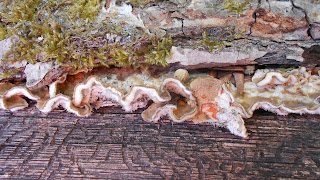I crochet
because it is very relaxing. It also
grows very quickly and is very portable.
If the project is granny squares then it is the perfect project for the
long winter evenings – because you can snuggle up under the developing blanket
whilst you are crocheting it – FAB!
The
interest in crochet is definitely on the increase and it does seem to be quite
fashionable at the moment - although this could probably be because of the
popularity of vintage/retro designs. In
the current economic climate our spending has been squeezed to be almost
non-existent, so people are turning to do-it-yourself and taking up traditional
crafts to create unique items for themselves and their homes.
In recent
years crochet has been seen on the catwalks of Missoni, Paul Smith, Kenzo and
Dolce & Gabbana, to name but a few and looking on the internet produces a
vast array of crochet items for sale, or patterns to buy, or free patterns to
make your own in any possible choice you could wish for; but really, unless you
are at the top of the market - with a Dolce & Gabbana crochet handbag
retailing for around $2900! - the intense work involved in producing a crochet item
(and the cost of the yarn) doesn’t make it very profitable. The best idea probably is to write a book.
I think
there will always be a place in the market for hand crafted products of any
description. People will always want
individual, unique items – whether clothing or items for the home – and certainly
hand-made for babies cannot be bettered.
For my grandson I make all kinds of cardigans (both knitted and crocheted) – that aren't found in the
shops – little granddad cardi’s with shawl collars and vintage leather buttons. I don’t think they would be particularly
profitable, but I am convinced there would be a market for them.
I think in this day and age of instant, disposable excess the need to get back to a much simpler past appeals to a lot of people.


















































